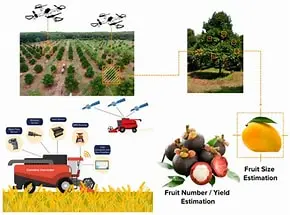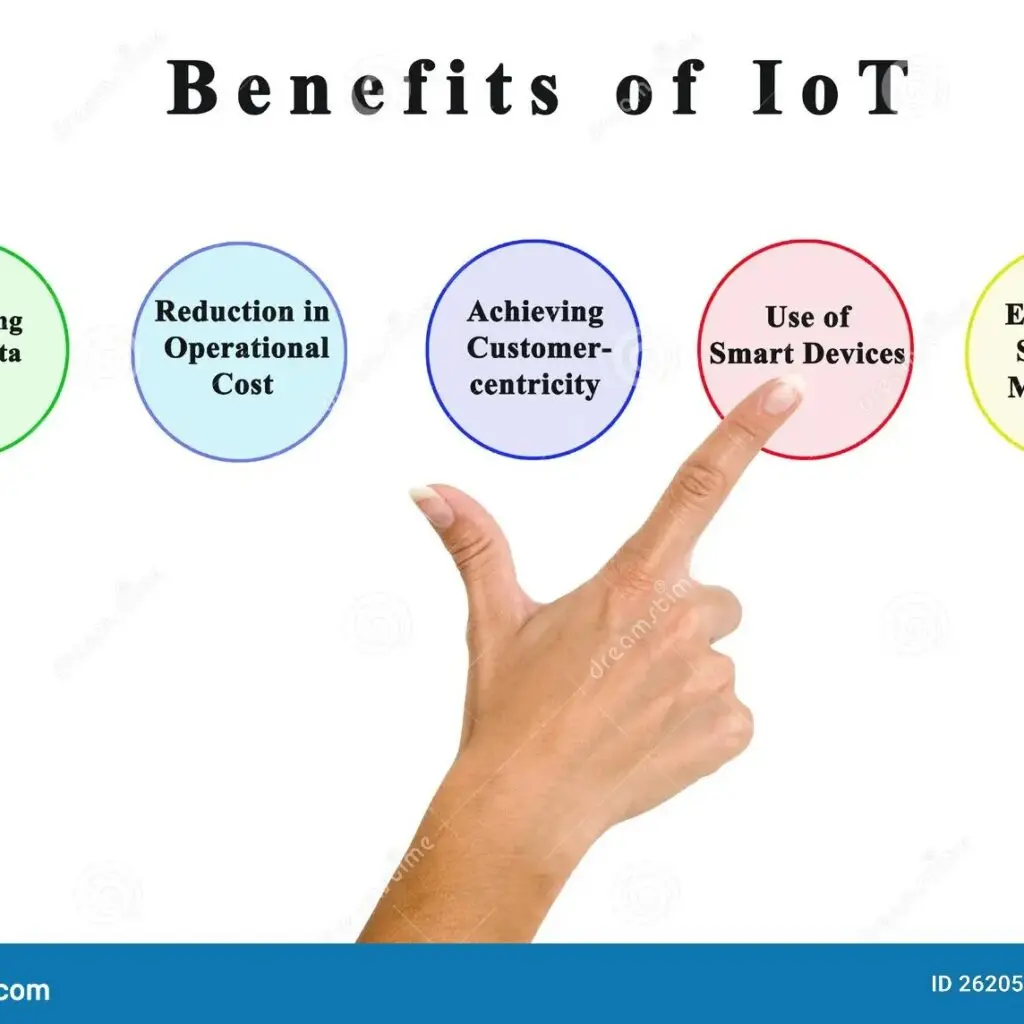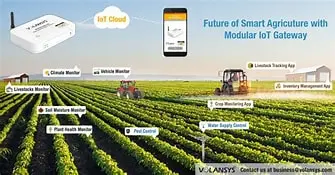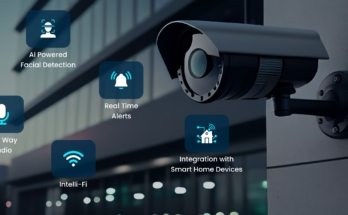Introduction: The Role of IoT in Modern Agriculture
In the age of technological advancements, agriculture is experiencing a profound transformation. As the global demand for food rises, farmers are turning to Internet of Things (IoT)-driven solutions to optimize their crop management practices. One crucial aspect of farming that can significantly benefit from IoT is post-harvest crop monitoring. But what does this actually mean?
Post-harvest crop monitoring involves tracking and managing crops after they’ve been harvested. This process includes monitoring the storage conditions, transportation, and overall quality to minimize losses. With IoT-based tools, farmers can now keep a close eye on crop conditions, whether it’s temperature, humidity, or spoilage risks, and make timely interventions. This article explores how IoT is revolutionizing post-harvest crop monitoring and how it can help reduce food waste, improve crop yield, and increase overall efficiency.

What is IoT and Why is it Important in Agriculture?
Defining IoT (Internet of Things)
The Internet of Things (IoT) refers to a network of physical devices—such as sensors, machines, and vehicles—that are connected to the internet, allowing them to collect, share, and analyze data. These devices can range from simple sensors monitoring temperature and humidity to more complex machines that use real-time data for decision-making.

The Role of IoT in Agriculture
In agriculture, IoT plays a crucial role in automating processes, improving productivity, and ensuring sustainable practices. From smart irrigation systems to weather sensors and crop health monitors, IoT is an invaluable tool that helps farmers make informed decisions based on data rather than guesswork.
Key Takeaways:
- IoT is the connection of physical devices to the internet for data collection and analysis.
- In agriculture, IoT allows farmers to monitor conditions remotely, optimize processes, and improve efficiency.
Challenges in Post-Harvest Crop Management
Crop Losses: A Global Crisis
Post-harvest crop losses are a major global issue, affecting both food security and economic stability. It’s estimated that nearly one-third of all food produced worldwide is lost or wasted, with a significant portion of this loss occurring after harvest. These losses are caused by various factors, including inadequate storage facilities, improper handling, and inefficient transportation.
The Need for Efficient Post-Harvest Monitoring
Effective post-harvest crop monitoring can significantly reduce these losses. By ensuring proper conditions for storage and transportation, farmers can maintain the quality of their crops and reduce waste. However, monitoring large quantities of crops manually is time-consuming, error-prone, and inefficient. This is where IoT-driven solutions come into play.

Key Takeaways:
- Post-harvest crop losses are a widespread issue impacting food security.
- Traditional methods of crop monitoring are often inefficient and insufficient.
How IoT is Transforming Post-Harvest Crop Monitoring
Real-Time Monitoring of Storage Conditions
One of the primary ways IoT is improving post-harvest crop management is through real-time monitoring of storage conditions. IoT sensors can measure temperature, humidity, and air quality inside storage facilities to ensure crops are stored in optimal conditions. These sensors can alert farmers immediately if there’s a change in conditions that could lead to spoilage, allowing them to take corrective actions quickly.
For example, if a grain silo’s temperature exceeds a certain threshold, the system can notify the farmer to prevent mold growth, which could ruin the entire batch of crops. This real-time feedback minimizes the chances of crop loss and ensures quality preservation.
Remote Monitoring and Control
With IoT, farmers no longer need to be physically present to monitor crop storage. IoT-enabled devices can send data to mobile applications or central dashboards, which farmers can access remotely. This allows for more efficient management of large-scale farms and ensures that crops are monitored around the clock, even when the farmer is not on-site.
Key Takeaways:
- IoT allows for real-time monitoring of storage conditions, ensuring that crops are stored optimally.
- Farmers can remotely manage and monitor crop conditions, making management more efficient.
The Role of IoT in Preventing Crop Spoilage
Temperature and Humidity Control
Temperature and humidity are critical factors in preventing crop spoilage. Many crops, especially fruits, vegetables, and grains, are sensitive to changes in these conditions. IoT devices can continuously monitor these environmental factors and send alerts when they deviate from the ideal range.
For example, fresh produce like fruits and vegetables require specific temperatures and humidity levels to stay fresh. IoT sensors help ensure these conditions are maintained, preventing premature spoilage and extending the shelf life of crops. The ability to control these conditions not only reduces waste but also improves the quality of the produce that reaches consumers.

Spoilage Detection
Some IoT systems also integrate spoilage detection algorithms that can analyze factors like color, texture, and gas emissions to detect spoilage early. This allows farmers and distributors to take immediate action to remove spoiled crops from the batch, preventing the spread of contamination to other crops.
Key Takeaways:
- IoT sensors help monitor and maintain optimal temperature and humidity levels to prevent spoilage.
- Advanced IoT systems can detect early signs of spoilage, minimizing crop waste.
IoT-Driven Solutions for Transportation Monitoring
Ensuring Proper Transport Conditions
In addition to storage, transportation is another critical phase in the post-harvest process that can affect the quality of crops. IoT devices can monitor the conditions inside transportation vehicles, such as trucks or containers, to ensure that crops are transported in ideal conditions.
For instance, sensors inside refrigerated trucks can monitor the temperature and humidity levels during transit, sending real-time data to the farmer or distributor. If the conditions change, the system can automatically adjust the environment or alert the operator to take action, preventing crop damage.
GPS and Tracking for Better Logistics
IoT can also assist in optimizing the logistics of transporting crops. GPS tracking devices can help farmers or distributors track the exact location of shipments, ensuring timely deliveries and reducing delays that could compromise crop quality. Efficient transportation routes can be planned using IoT data, reducing the overall transportation time and minimizing the risk of spoilage.
Key Takeaways:
- IoT ensures that crops are transported under the correct conditions, reducing the risk of damage.
- GPS and logistics tracking optimize transport routes, improving the efficiency of delivery.
Benefits of IoT for Post-Harvest Crop Monitoring
Reduced Crop Losses and Waste
By utilizing IoT-driven solutions, farmers can significantly reduce post-harvest losses. Continuous monitoring of storage, transportation, and environmental conditions ensures that crops remain in optimal conditions. Early detection of spoilage and temperature or humidity fluctuations allows for quick intervention, reducing waste and improving overall crop yield.
Enhanced Quality Control
IoT solutions enable farmers to maintain high-quality standards for crops. By monitoring and controlling conditions that impact crop quality, IoT helps ensure that only the best produce reaches consumers. For instance, by preventing spoilage and maintaining proper storage conditions, crops retain their freshness, flavor, and nutritional value.
Increased Efficiency and Cost Savings
IoT devices can automate many aspects of post-harvest crop management, reducing the need for manual labor and human error. This automation results in increased operational efficiency and cost savings. Additionally, by preventing crop loss, farmers can maximize the value of their harvest, boosting their profitability.
Key Takeaways:
- IoT reduces crop loss and waste through effective monitoring and early detection.
- It enhances crop quality and helps ensure the best produce reaches the market.
- Automation through IoT improves efficiency and reduces operational costs.
The Future of IoT in Post-Harvest Monitoring
Integration with AI and Machine Learning
As IoT technology evolves, its integration with Artificial Intelligence (AI) and Machine Learning (ML) will unlock even greater potential for post-harvest monitoring. AI algorithms can analyze vast amounts of data collected by IoT devices, predicting potential issues before they arise and offering actionable insights for farmers.
For example, AI can predict the ideal storage conditions for different types of crops based on historical data, adjusting parameters dynamically to ensure optimal preservation. Machine learning can also be used to identify patterns in spoilage, improving the detection of at-risk crops before they’re affected.
Blockchain for Traceability and Transparency
Blockchain technology can complement IoT-driven solutions by providing an immutable record of the entire post-harvest process, from storage to transportation. This offers greater transparency and traceability, which is essential for consumers and regulatory bodies. With blockchain, consumers can know exactly where their food comes from and how it was handled.
Key Takeaways:
- AI and ML will enhance IoT systems by providing predictive insights and dynamic adjustments.
- Blockchain technology can offer transparency and traceability in the post-harvest process.
Read This: The Evolution of Fashion Trends: A Look Back at the Last Decade
Conclusion: Embracing the Future of Post-Harvest Management
The integration of IoT into post-harvest crop monitoring is a game-changer for agriculture. By providing real-time insights into storage and transportation conditions, preventing spoilage, and optimizing logistics, IoT-driven solutions are helping farmers reduce waste, maintain crop quality, and increase overall efficiency. As technology continues to evolve, the potential for IoT in agriculture will only grow, paving the way for a more sustainable and productive future.
By embracing these advanced technologies, farmers can ensure that they are prepared for the challenges of modern agriculture, meeting the demands of a growing population while minimizing the environmental impact. The future of post-harvest crop monitoring is bright, and IoT is at the heart of this transformation.
FAQs
1. How does IoT help prevent crop spoilage? IoT sensors monitor temperature, humidity, and air quality, ensuring that crops are stored and transported in optimal conditions. They also detect early signs of spoilage and alert farmers to take action.
2. Can IoT solutions be used to monitor crops during transportation? Yes, IoT devices can monitor transportation vehicles in real-time, ensuring that crops remain in the correct temperature and humidity ranges during transit. This prevents damage and spoilage.
3. What are the economic benefits of using IoT for post-harvest monitoring? IoT improves efficiency, reduces waste, enhances quality control, and lowers operational costs, leading to greater profitability and higher crop yield for farmers.
4. How can AI enhance IoT-based post-harvest solutions? AI can analyze data from IoT devices to predict potential issues, adjust conditions dynamically, and offer actionable insights that help optimize crop management and prevent loss.
5. How does blockchain improve the traceability of crops in post-harvest management? Blockchain creates an immutable, transparent record of the entire post-harvest process, ensuring that crops are handled according to safety and quality standards, and providing consumers with greater transparency.

